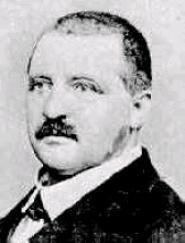Key C minor Dedication University of Vienna | Catalogue WAB 101 Published 1893 | |
 | ||
Composed 1865 (1865)–1866 (1866): (Linz version)
1890 (1890)–1891 (1891): (Vienna version) Performed 9 May 1868 (1868-05-09): Linz | ||
Anton Bruckner's Symphony No. 1 in C minor (WAB 101) was the first symphony the composer thought worthy of performing, and bequeathing to the Vienna national library. Chronologically, it comes after the Study Symphony in F minor and before Symphony in D minor ("No. 0"). The first version of the Symphony No. 2 in C minor was completed after the Symphony in D minor.
Contents
- Description
- Early draft 18651866
- 1866 First version
- 1868 version
- 18771884 Linz version
- 1891 Vienna version
- 1893 first published edition
- Instrumentation
- Selected discography
- Early draft of 18651866
- Version of 1866 Linzer
- Version of 18771884 Linzer revised
- Version of 1891 Wiener
- References
The Symphony No. 1 was premiered under Bruckner in 1868. It was dedicated to the University of Vienna, after Bruckner was granted an honorary doctorate in 1891.
Bruckner gave it the nickname "das kecke Beserl", roughly translated as "saucy maid".
Description
The symphony has four movements.
- Allegro (C minor)
- Adagio (A-flat major)
- Scherzo: Lebhaft (lively)—G minor – Trio: Langsam (slowly)—G major
- Finale: Bewegt und feurig (with motion and pep)—C minor
The choice of keys for the first two movements mirrors Beethoven's choice for his Fifth Symphony, but Bruckner has the timpani retune to A flat and E flat.
Early draft (1865/1866)
Prior to the completion of the 1866 version, Bruckner composed earlier forms of the Adagio and the Scherzo. These earlier Adagio and Scherzo were edited in 1995 by Wolfgang Grandjean.
The Adagio was first conceived in classical sonata form with development, but Bruckner finally decided in favour of a three-part structure with an elaborately composed middle section. This early Adagio is partially orchestrated (no trumpets or trombones). The recapitulation of the second subject is only sketched by the woodwinds, and five bars are missing before the—on the contrary—fully orchestrated close of the movement. For performance purposes, Grandjean has filled–in the missing bars using the corresponding musical material from the Linz version.
In the leaflet of his recording of the 1866 Version Tintner mentions: "[T]he earlier very short Scherzo, which Bruckner discarded before 1866 (because of its brevity?) with chromatic syncopation, is perhaps more interesting [than the final one]". The early Scherzo is also not fully orchestrated (no trumpets or trombones). For the Linz version Bruckner wrote a completely new Scherzo, but kept the Trio unchanged.
1866 ("First") version
The first version of the symphony was written by Bruckner in Linz. This first version has been published by William Carragan, and first recorded by Georg Tintner in 1998.
1868 version
This slightly revised version, which was prepared by Bruckner for the 1868 premiere performance, is issued by Thomas Röder in the in-progress, new edition of the Bruckner Gesamtausgabe. It has been premiered by Cornelius Meister with the RSO of Vienna during the Salzburger Festspiele on 9 August 2014. The American premiere occurred by Jacob Sustaita with the Sam Houston State University Orchestra on 30 September 2016. A digitalisation of this American premiere can be dowloaded from John Berky's website.
1877/1884 ("Linz") version
Although often also called the Linzer Fassung (Linz version), this version was in fact made in Vienna. It is available in editions by Robert Haas (published 1935) and Leopold Nowak (published 1953). The vast majority of recordings, including the famous one featuring Eugen Jochum conducting the Dresden Staatskapelle, are of one of these two editions.
1891 ("Vienna") version
Known as the "Vienna" version, this version is considerably different from the 1866 and 1877 versions. It is available in an edition by Günther Brosche, published in 1980. It has been recorded by Riccardo Chailly, Gennadi Rozhdestvensky and Günter Wand.
1893 first published edition
Edited by Doblinger under the supervision of Cyrill Hynais, this has very few differences from the 1891 version. It has been recorded by F. Charles Adler, Volkmar Andreae and Fritz Zaun (scherzo only).
Instrumentation
The score calls for a pair each of flutes, oboes, clarinets, bassoons, four horns, two trumpets, three trombones, timpani, and strings, with an extra flute in the Adagio.
Selected discography
The first commercial recording was by Fritz Zaun with the Berlin State Opera Orchestra in 1934. It included only the scherzo, in the 1893 first published version.
The first commercial recording of the entire symphony was by Volkmar Andreae with the Lower Austrian Tonkünstler Orchestra in 1950, also using the first published version.
Early draft of 1865/1866
There is a single commercially available recording of the early Adagio and Scherzo:
